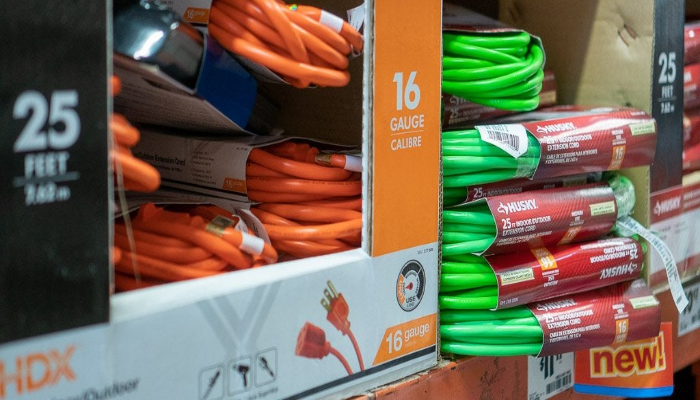An extension cord is a crucial part of any residential or commercial property. It provides the power and convenience needed to run many appliances, such as computers, TVs, microwaves, refrigerators, and more. But how to tell the gauge of an extension cord? In this blog post, we will teach you how to identify the indicator of an extension cord by looking at its markings.
Type of plug of your appliance
The first thing that needs to be done is find out what type of plug your appliance has on it (NEMA 5-15P, for example). This information can usually be found on the backside of your device near where it plugs in. Once you know what type of plug your appliance has, look for the corresponding number next to that plug which corresponds with the wire size inside the extension cord (for example, 12/3). If there isn’t a corresponding number next to your pin, use our chart below for reference.
Choosing an Extension Cord
Now that you have identified what gauge an extension cord is, all that’s left is choosing one! There are three different types available – light-duty cords (10/2), medium-duty cords (12/3), and heavy-duty cords (14/3). Light Duty Cords are typically used for smaller appliances like lamps or televisions, while Medium Duty Cords work well with larger items like microwaves or refrigerators. Heavy Duty Cords should only be used when running high-wattage appliances like electric space heaters or air conditioners because of their thicker wire.
Light Duty Cord: (16-18 AWG) – up to 150 volts, less than 75 watts
Medium Duty Cord: (14-12 AWG) – up to 200 volts, between 100-150 watts
Heavy Duty Cord: (0-12 AWG)- over 600 volts and more than 1500 watts
Video Credit: Pro Tool Reviews
How to tell the gauge of an extension cord? The Best Practice
In the case of a power outage or circuit overload, it is best practice to unplug all appliances from extension cords before turning off breakers in your breaker box. Doing so will ensure that you avoid an electrical fire caused by sparking when equipment with residual current runs through those circuits after they have been broken. If this does not work, we recommend calling for professional help as soon as possible because this condition could be life-threatening.
If your extension cord is starting to show any signs of wear and tear, it may not provide enough power or a proper ground connection for you. For example, suppose you are working with large appliances (heaters, air conditioners), heavy-duty tools (saws), or other high-wattage items. In that case, we recommend upgrading the gauge on your cords before using them to avoid electrical fires as well as an outright circuit overload.
Doing so will ensure that the equipment does not overheat due to inadequate power supply and reduce the chance that they get damaged beyond repair by an electric shock when pulling out from under loads which generate sparks in response. Running cords between floors also poses risks if these conditions exist. There can be significant voltage fluctuations depending on how many floors there are and the amount of air conditioning in each one.
Signs to look for when checking a Gauge
- The size of the wire is measured by AWG (American Wire Gauge) – this number will be smaller as it gets higher, with 14 being most common for small appliances and 12 or 16 typically used for extension cords. If you notice that your cord has multiple wires inside, it’s likely to be thicker than if only two wires are present.
- For both single and multi-wire cables, the insulation is also an indicator because its thickness corresponds with their gauge level too; 0 means they have no insulation, while 13 would provide maximum protection against short circuits due to abrasion caused by the wire’s movement.
- The number of individual strands in a cord is also an indicator, with thicker cords having more than thinner ones since it would require additional insulation to cover all the wires and space inside.
- Finally, when trying to determine whether you’re using an 18 gauge extension cord or not, look at how many volts are on either side because if there is only 110V, then that means your cable has 16 AWG wiring, which corresponds to an 18 gauge rating.”
What You Need To Know About Extension Cord Gauge
Extension cords come in various gauges, and knowing which one you need is vital for both safety and how well it will work.
The number on the extension cord corresponds with its gauge level, so if they are labeled as 12 or 16, they have insulation. At the same time, an 18 would provide maximum protection against short circuits caused by abrasion from wire movement.





